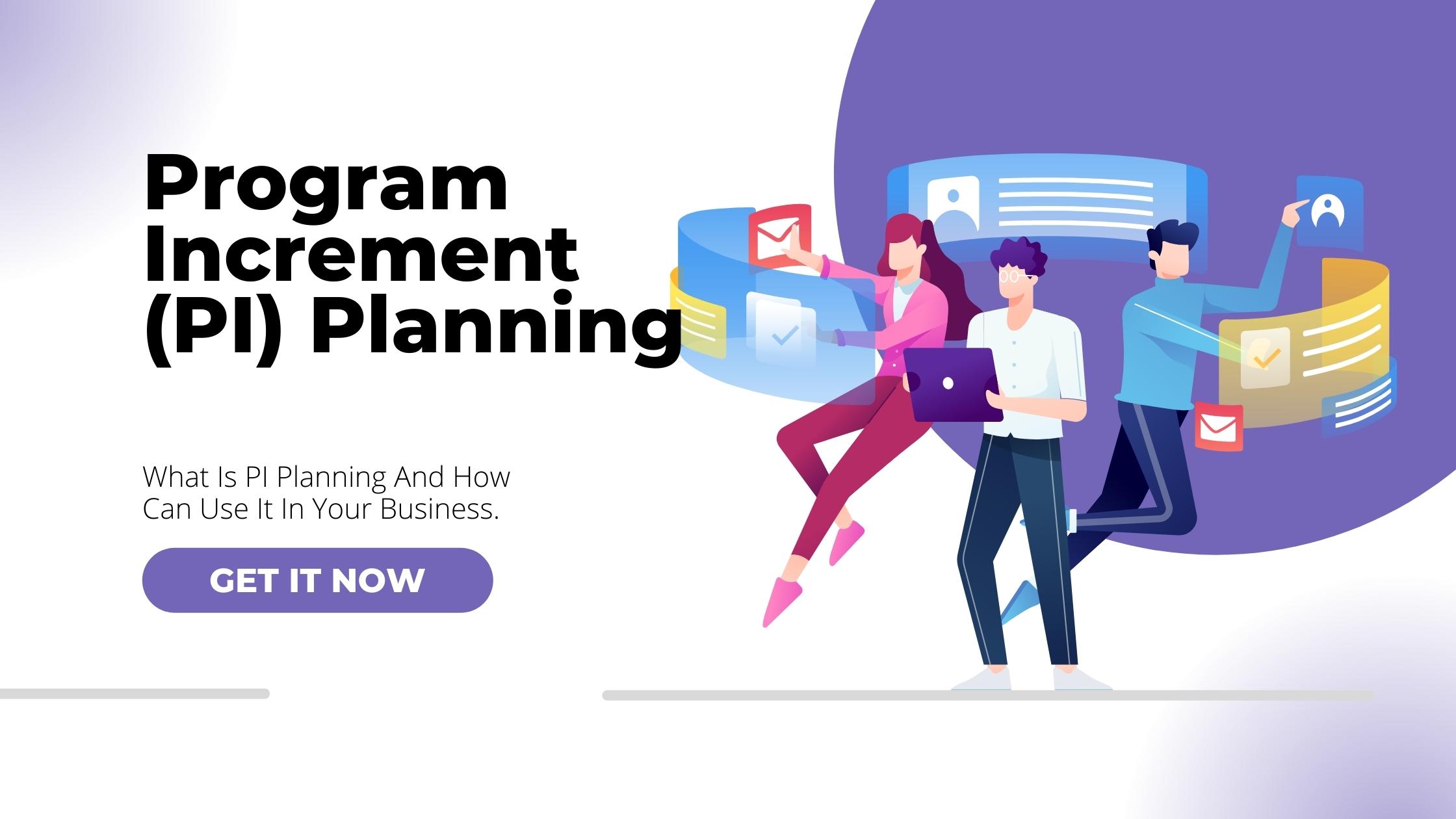
The Agile Release Train’s (ARTheartbeat ) Program Increment (PI) Planning, a cadence-based, face-to-face event, aligns all teams on ART with a shared goal and vision.
It allows for Scaled Agile Framework (SAFe) development on a large scale since this is a highly tuned machine that requires maintenance. If you don’t do PI planning, you’re not performing SAFe.
The standard plan for PI Planning involves a presentation of the business context and goal, led by group brainstorming breakouts in which teams establish their objectives and iteration plans for the following Program Increment (PI).
This event, facilitated by the Release Train Engineer (RTE), comprises all ART members and takes place during the Innovation and Planning (IP) Iteration. Keeping the event during the IP iteration prevents interfering with the capacity or scheduling of other similar sessions.
Lastly, PI Planning typically takes two days, even though this is sometimes extended to allow planning across different time zones.
Benefits Of PI Planning
PI planning provides several distinct corporate benefits, including:
- Establishing the ART’s social network, including remote group members, ice breakers, and team-building games, may help create confidence and comfort
- Making face-to-face contact with all stakeholders and team members – everyone must be focused
- Linking development to business goals within the company’s framework, vision, and team and program PI objectives. The event gets everyone together so that they can grasp the company’s goal and feel like they are a part of the process
- Quick decision making — once everyone is there, there is no need to wait for someone to respond or guess if they saw your email. Debates, discussions, and decisions are made in minutes or hours rather than days or weeks
- Recognizing interdependence and encouraging cross-team and cross-ART collaboration. When dealing with difficulties, risks, and dependencies, it is critical that everyone feels comfortable asking for help and figuring out how teams can collaborate. With this, people eventually get to put a face to a name they have been emailing for months
Preparation
PI planning involves planning, coordination, and communication (RTE). With RTE coordinating it, event participants include Business Owners, Product Management, Agile Teams, System and Solution Architects/Engineering, the System Team, and other stakeholders.
All of them must be alerted ahead of time so they can prepare. In addition, business owners’ active involvement in this event serves as a vital check on budgetary spending.
There are three aspects of preparation for PI planning:
Organizational Readiness
Plans must be developed to ensure that all stakeholders and program leaders are available. This works best if the PI planning meetings are arranged far ahead of time.
It might be planned after the previous quarter to ensure everything is ready for the start of the new quarter. Most significant corporations will make this a quarterly discussion everyone can rely upon.
Content Readiness
The program’s goal and vision must be adequately defined for the planning to begin. Business stakeholders and program leaders are the ideal people to impart this to teams from day one.
Facility Readiness
One of the easiest methods to ensure all teams can roam about and pose questions to some other teams is to have a spacious space. A decent rule of thumb is to have a room twice what is required for the number of guests.
For instance, if you have 93 team members, you need to have a space to accommodate 186 people. In addition, walls prevent individuals from moving and conversing.
You might be interested in:
- 5 Apps that distance learning easier.
- Top 10 Remote Work Tips to Improve Productivity and Morale.
- 6 Businesses That You Can Start For Less Than $1,000.
- 5 Simple Ways To Cut Recruiting Costs.
Stages of PI Planning
The stages for Program Increment Planning are as follows:
- Preparedness at the Organizational Level
- Content or Contextual Preparedness
- Facility Readiness
- Standard
Plan For Day 1
- From a business standpoint
- Product/Solution objectives
- Technical/Developmental Objectives and Plans
- Lunch Team Breakouts & Planning Context
- Examining Rough Plot Management and Problem Solving
Day Two
- Program Modifications
- Breakout Sessions for Teams
- Review of Final Plan and Lunch
- Program Dangers
- Vote of Confidence
- Retrospective
Conclusion
The majority of businesses use an onsite-offshore approach. However, since teams are dispersed around the globe in today’s globalized economy, and all teams are working on the same typical program, you must go further than the scrum structure.
The SAFe methodology is the need of the hour for this sort of organization. Because you are using SAFe, you will need to do PI Planning, which is key to the SAFe approach and will assist in bringing all employees together.
SAFe is currently in high demand owing to its numerous features. Therefore, it is critical to have a thorough understanding of it to execute or implement it successfully.
To find out where you stand with PI planning and how much of it is hitting the target for you, you can always use Google Analytics to evaluate where you stand.




